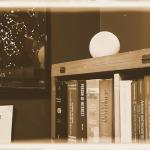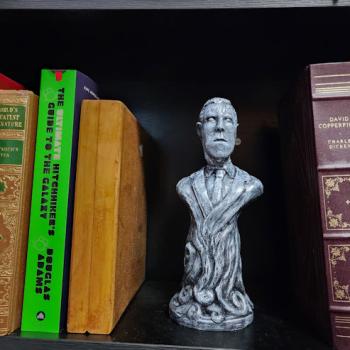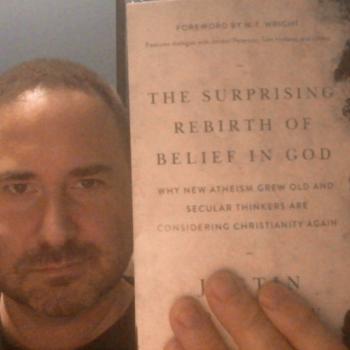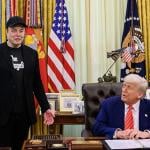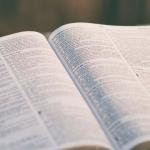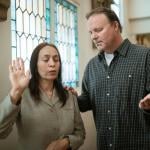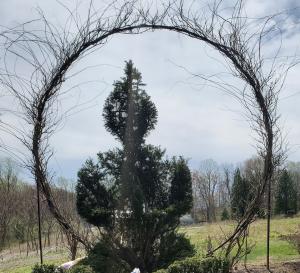
The Conversion of Yoon-Sook Lee
Miss Yoon-Sook Lee had a problem. It started as chronic diarrhea, but rapidly developed into nephritis. All of the medical treatment available to her failed to restore her health, and things did not look good.
It was about this time that Miss Lee learned of the Divine Precept. This religious movement, which operated not far from her home in Korea, had been founded only a short time ago, and had already accumulated thousands of followers. The leader of the Precept, Mr. Chang, boasted of divine power, and it seemed to Lee like he might be her last hope. So the pain-wracked, bedridden woman had her servant deliver her to Chang’s doorstep.
Even before Lee’s health was restored to her, she was a devoted follower of the Divine Precept. Lee was not just any typical convert. She had been looking for something like the Divine Precept for most of her life. As a teenager, Yoon-Sook Lee had suffered bouts of depression and social anxiety, driving her to seek the solitude of nature. It was upon meditating on a secluded hilltop that Lee began to have visions and hear voices. These voices convinced her that she had a special mission to perform for God.
It was in pursuit of this mission that Miss Lee began to attend a Methodist Seminary in Japan. She was a good student, but she found herself disappointed at the lack of spiritualism and mysticism within the university.
This was to be her experience thereafter. She graduated to become a professor of religion, and continued to seek seminarian education, but she was always disappointed at the way the church failed to explain, understand, or facilitate her continued visionary and mystical experiences. The Divine Precept, however, welcomed Lee with open arms. Mr. Chang appreciated and encouraged her visions and voices, and she became second to him in leadership.
Mission to America
Mr. Chang had grand ambitions for his movement. He wanted to expand across the globe and share his precept with everyone. After all, the world was going to end in a few years, and he had to warn them all that the end was nigh. It was with this in mind that Chang sent his right-hand woman to be a missionary to America.
It was near the end of the 1950s, and America was a plumb, ripe for the picking. Lee arrived on the shores of California, eager to spread the message of the New Eden that was soon to come to earth. The first 2 years of Lee’s missionary ventures were disappointing, however, netting only five converts.
One of the five converts had been wooed in, as a teenager, to a “modeling firm” who took her money and then left her hungry and jobless in return. She returned home and married a local boy, but was terrified to engage in intercourse. After a tumultuous marriage full of separations and conflict, she eventually had two children with the man, but nevertheless had an affair with a neighboring woman. She, like Lee, had begun to have hallucinatory experiences which she thought to be divine. But when she presented her spiritual episodes to the local church, they considered her mentally unwell. So, when Lee came along assuring the girl that her spiritual experiences set her apart from others, the girl eagerly left husband and children to follow Lee.
Another of these followers was a young girl from Arkansas who had begun dating at age 12 and was married by the age of 15. She now had 3 children at the age of 27 and found herself stuck at home, watching television, and caring for her children all day. Her husband was too busy to take her out dancing – or to take her out of the house at all – and she had the deeply troubling feeling that she had married too young, and life had passed her by.
Her mother had been a Pentecostal preacher, and she slipped out from time to time in order to attend local tent meeting revivals. There she was “slain in the spirit” and found herself speaking in tongues. So, when Miss Lee came along and offered her freedom and the opportunity to explore the spiritual side of life, Minnie Mae eagerly left her husband and children to follow the missionary.
The local churches gradually became aware of this strange woman with her bizarre spiritual movement which seemed to be luring women away from their families. With the sudden opposition from the locals, Lee and her followers left town.
The Researchers Arrive
Their new residence in Bay City, California was a major metropolis, and in only a few years Miss Lee had garnered over 100 followers. From there the cult migrated from place to place, living together and taking local jobs to support Miss Lee in her spiritual study and missionary endeavors.
Divine Precept taught that God was going to descend to earth in the year 1967, restoring earth to the conditions of the garden of Eden and then begin ruling through a network of divine proxies.
The cult grew large enough to attract the attention of a few ambitious academics: Rodney Stark and John Lofland. These researchers had been looking for the opportunity to study the process of religious conversion, and saw this rapidly growing cult as the perfect petri dish to do so.
Key to the kind of study these researchers hoped to do was a thing called “phenomenology.” In research terms, this means that the subject is able to report exactly how the experience feels at the time it happens. The more time that elapses between the actual conversion and the person reporting their experience, the less likely they are to accurately report their thoughts and feelings at the moment it was happening. A cult which was rapidly accumulating followers gave these researchers the opportunity to snatch up converts almost immediately and collect data both accurately and abundantly. Additionally, with the converts all occupying the same space, the two researchers could track their behavior over time and take note of any changes in behavior or commitment.
Ever the evangelist, Miss Lee was quite glad to have the eyes of the academy upon her as she cultivated her following, and invited the researchers in with open arms.
The two researchers were both very thorough. In addition to interviewing the members of the commune, they tracked down family, friends, neighbors, and leaders of the churches these converts had abandoned for life in a cult. They also interviewed individuals who had almost converted, but backed out. The data they gathered were tremendous.
What do Cultists Look Like?
The first thing Lofland and Stark noticed about the members was how similar they were in demographic. While Divine Precept had originated in Korea, the members in America were all white people from the lower middle class.
The majority of members were social outcasts. A number had been labeled “sexual deviants,” and more than a few had experienced hallucinations or spiritual “episodes” which general society found bizarre or uncomfortable.
Despite the metropolitan center of operation, Lee tended to attract small-town people who felt out of place in the big city. The members were almost entirely from Protestant backgrounds. This could be because, in the 1960’s Protestant Christianity was the dominant form of religion in California. It could be because Lee herself had a Methodist seminary education, and knew the language and thought of Protestant Christians. Or it could be because the Divine Precept wasn’t entirely alien to Protestant thought. It largely gave a nod to the Biblical teachings, and simply piled a few doctrines and an alternate form of spirituality on top of them.
As an example of a typical member, take the case of a convert named “Elmer.” This young man fancied himself a genius and inventor, accumulating books, and lots of tidbits for his inventions. Sadly, he was illiterate, and never really put any inventions together. He had tried to go to college, but quickly flunked out. He tried to join the military, but dropped out of that as well. Unlike other members, Elmer had never had hallucinations or spiritual experiences; but he did enjoy stories of the paranormal: ghosts, UFOs, and psychic powers. Elmer had social anxiety, and spent his time staring at his shoes and avoiding eye contact. He proclaimed he was destined for great things, but bitterly blamed the world for never allowing his dreams to reach fruition. Like all the other members, Elmer had little difficulty accepting a community which accepted him, and typified the kind of convert the cult attracted.
Trouble in Paradise
The cult was there to preach the coming of a New Eden, but there was already a snake or two lurking in the garden. Lofland and Stark discovered that members were already harboring suspicions of each other. They had formed sects within sects to spread rumors and suspicion. The committed members resented the attendees who did not abandon their lives to dwell within the commune. Those who had devoted all of their time and money to the cult were suspicious of others who kept the money they made and did not give it all to Lee.
It was at this point that the researchers had an academic question to ask themselves: were converts really converts if the community did not accept them? Which defines conversion: personal testimony or corporate acceptance?
The Lofland/Stark Model of Religious Conversion
There would always be questions to ask, and things to investigate regarding religious conversion. Nevertheless, the two researchers had enough data to advance the most foundational model of religious conversion in modern times, upon which all the models that have followed have been constructed.
This seven-stage model is as follows:
- Tension
The potential convert has some kind of unresolved tension in their life. Something feels wrong or unresolved, and it dominates their thoughts.
- Problem Solving
The potential convert begins focusing on resolving the tension. He or she begins to seek relief from whatever quarter it may come. It is at this point that religion becomes a potential avenue of relief.
- Religious Seeker
Once the person is in a problem-solving mode and religion becomes an option, the person has become a “Religious Seeker,” meaning that he or she begins to investigate his or her religious options.
- Turning Point
A significant change or event occurs which gives a shove in the direction of the religion.
- Encounter
The person encounters the specific religion to which he or she is going to convert.
- Bonding
A relationship forms between the seeker and a member or members of the religion. After this, the bond with the religious members gain primacy over all other bonds in the person’s life, with family and friends becoming secondary to the religious community.
- Becoming an active member
The person is now a member of the community. They participate in the religious practices, and support the other members of the community.
With their model formed, peer reviewed, and released to the academic world, going on to become the most famous conversion study in the history of conversion research, Lofland and Stark’s chapter in the story was complete. But what became of the cult? This will be the topic of part 2.


